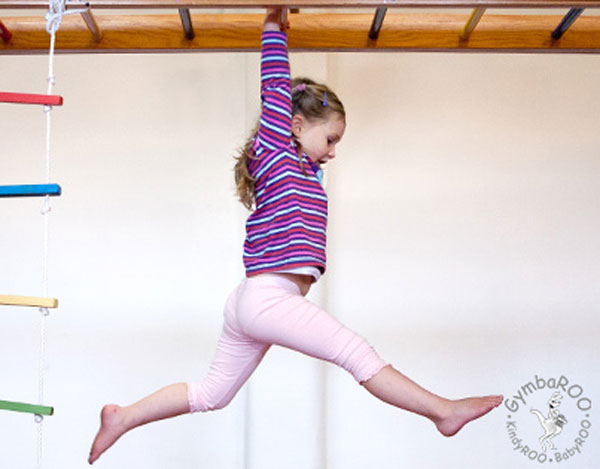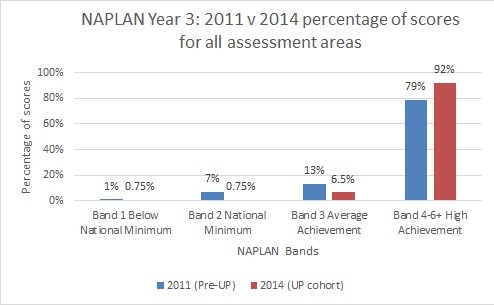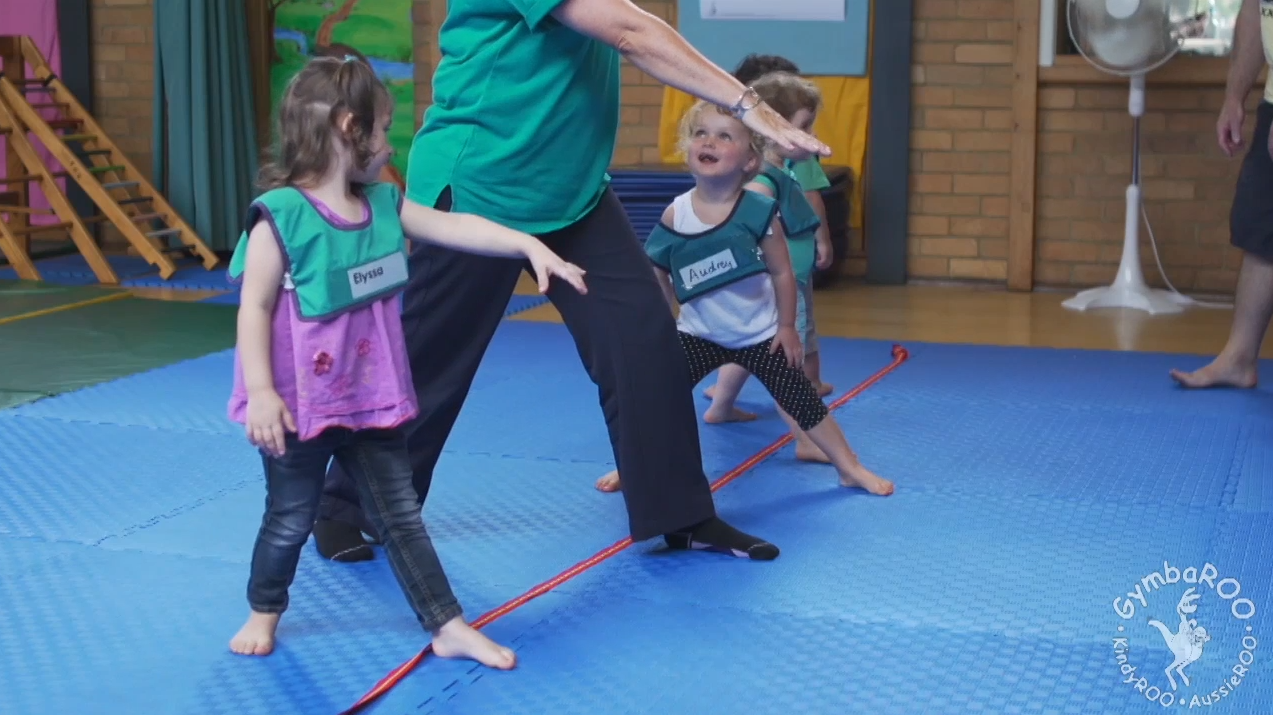GymbaROO kids are excelling academically, emotionally, in leadership roles and on the sporting field. Classes from birth – 5 yrs
A recent study on the GymbaROO designed and developed program: ‘Unlocking Potential’ (UP) – a daily 25 minute neuro-developmentally structured physical activity program for school aged children – clearly shows a statistically significant positive effect across children’s academic achievement, their NAPLAN results, behaviour, physical, social and emotional skills and overall happiness at school.
Very importantly, these effects are holding in later literacy and numeracy assessments.
This study has major implications for teaching strategies and the development and learning potential of all children. The results could not be more exciting for parents, schools and governments worldwide.

For years now we have known of the importance of early movement experiences to later learning, it has just taken a long time for many educational institutions and governments to listen. Now we have an Australian study that offers further evidence of the importance of movement to learning. The results of this study are consistent with previous studies investigating the link between early motor skills and learning, including the Mornington Peninsula: ‘No Child Should Fail’ a pilot education and research study approved by the Victorian Education Department in 2008.
A just released, concurrent study of 400 children consolidates the evidence even further. Children who participated regularly in the GymbaROO UP program made significant gains in levels of ability when compared to a group of children who did not. Click here for more.
In this latest study, 150 Australian primary school children participated in the 25 minute daily GymbaROO UP program each school morning, for an entire school year. The program is based on the premise, and increasing research support, that motor development skills form the foundation for higher order learning and cognition. Children who have excellent motor skills are most likely the children who will achieve well in the classroom.
The UP program was incorporated into the daily school routine in place of normally scheduled literacy or numeracy classes. Of this group, 42 Year 1 children undertook pre and post program testing in the first year (2012) and NAPLAN scores were compared to a pre-UP cohort (2011) when they were in Year 3 (2014).
Initial results, after 10 months on the daily program show statistically significant improvements in children’s developmental age and level of ability, with neurological age and ability improving over 2 years and 11 months during this short period.

Year 3 NAPLAN results showed a considerable reduction in the number of children scoring in the lowest NAPLAN bands across all subject areas and an increase in the number of children scoring in the highest NAPLAN bands when compared to earlier, pre-UP results.

As well as improved NAPLAN results, teachers also reported noticeable improvements in classroom and playground behaviour, concentration, handwriting, letter reversals, ability to follow instructions, coordination, fitness and morale.
The Principal of the participating school commented: “One of our highly experienced teachers – one of the best I have seen – was cautious at first of adopting the program. However, she now swears by it and will not let anything take away from sensorimotor time.”

The GymbaROO UP program also has vast implications for helping to reduce the increasingly alarming number of children presently struggling with learning difficulties. The Australian Early Childhood Census (AEDC) reports that as many as 1 in 5 children begin school with developmental immaturities that affect learning.
Teachers reported that due to their increased knowledge and the daily implementation of the UP program, children with developmental challenges had become easier to identify. As a result, referrals and support services were expedited.
The Principal reported that these children were “few” after a year on the program.
Even children who were considered to be ‘good learners’, before the program’s implementation, improved in their level of ability and learning outcomes. These results are again replicated in the larger study of 400 children just been released.
What is important to note is that the brain is most receptive to sensorimotor experiences in the first years of life. In an ideal world it would be more effective for children to develop the essential movement patterns and enable maturation of brain creating solid foundations for learning in the years before they start school. This forms the entire premise for GymbaROO.

However, the brain does continue to respond, connect and change throughout life. A program such as the UP program introduced to primary school aged children clearly does provide them with the opportunity to ‘rebuild’ the optimal neurological pathways necessary for higher cognitive thinking and learning, if they have missed this earlier opportunity.
For those children who already have their brains neurologically organised and ready for learning, like GymbaROO/KindyROO children, these movement programs will continue to build onto their already solid foundations.
The successful UP program:
- Involved specific developmental movement exercises that replicated early infant and childhood motor skills and patterns.
- Introduced neuro-developmentally supportive movement games designed to enhance sensory stimulation, vestibular function, balance and posture, coordination, perceptual skills and developing conceptual abilities.
- Was a regular, daily commitment conducted over a sustained period of time. How the brain is structured, and how well it functions is determined by the frequency, duration and the intensity of activity. Neuro-developmentally based movement programs run only once a week will do little to change the course of development or learning outcomes.
Schools and governments are constantly seeking ways to improve learning outcomes and the UP program in coordination with systematic and foundational teaching strategies, is now where they need to focus.
For the sake of the children, these movement programs should be implemented as soon as possible.
To find out more about implementing the GymbaROO Sensorimotor Programs in your centre or school, click here for our Media Kit or view more information in our online shop.
Find Dr William’s report here.
Dr Jane Williams is one of Australia’s leading experts on child development. She lectures extensively and appears on media worldwide. She is frequently the keynote speaker at both national and international forums. Williams is the Director of Research and Development at GymbaROO. She is available as a guest child development specialist for radio and television programs. More on Dr Williams here.
References: Williams, J. (2015). Does a neurodevelopmental movement program affect Australian school children’s academic performance? Unlocking Potential: a report. Australian Journal of Child and Family Health Nursing, Vol 12 Issue 2 (Dec.).
BabyROO GymbaROO KindyROO
Thousands of parents, babies and children are presently involved in our programs. GymbaROO kids are excelling academically, emotionally, in leadership roles and on the sporting field. Come join all the fun and learning! “GymbaROO – The best decision I ever made for my child.” Classes from birth – 5 years. Find your local GymbaROO.

